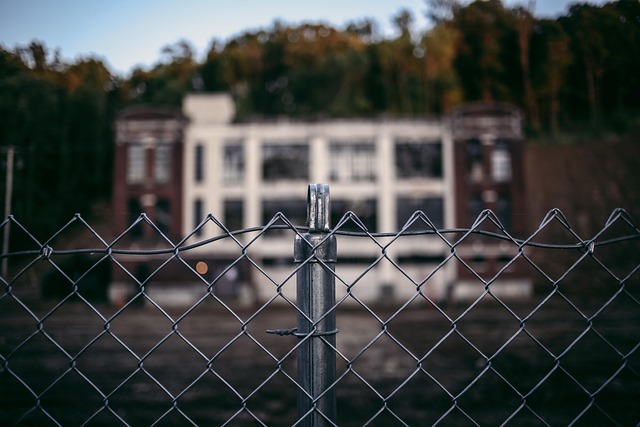Introduction
Coastal areas present unique challenges when it comes to fencing due to relentless wind, salt air, and fluctuating moisture levels. This article explores the benefits of durable wooden fencing as a robust and aesthetically pleasing solution for these environments. We delve into key considerations such as selecting the right wood species, installation techniques tailored to coastal conditions, and maintenance strategies to ensure longevity. By the end, readers will understand how to enhance their coastal landscapes with wood fences that withstand the test of time and nature.
- Understanding Coastal Fencing Challenges
- Benefits of Durable Wooden Fencing
- Choosing the Right Wood Species
- Installation Considerations for Coastlines
- Maintenance Tips for Longevity
- Enhancing Coastal Aesthetics with Wood Fences
Understanding Coastal Fencing Challenges
Coastal areas present unique challenges when it comes to fencing due to their harsh environments. Salty air, strong winds, and frequent rainfall can accelerate material degradation, making traditional fences less durable. The constant exposure to moisture and salt can weaken wooden posts and rails, leading to structural failures over time. Additionally, coastal landscapes often feature irregular terrain, which requires custom-designed fencing solutions to seamlessly integrate with the natural environment without obstructing scenic views or causing erosion.
These challenges necessitate the use of robust materials and innovative design approaches. Durable wooden fences for coastal areas should be crafted from rot-resistant hardwoods like cedar or treated softwoods that have been enhanced with preservatives. The fence design should incorporate features such as tight knotted lumber, double-treated posts, and galvanised hardware to ensure longevity in these demanding conditions.
Benefits of Durable Wooden Fencing
Durable wooden fencing offers a range of benefits for coastal areas, providing both functional and aesthetic advantages. One of its key strengths is resilience; treated to withstand harsh weather conditions, including salty sea air and regular exposure to moisture, this type of fencing can endure for many years with minimal maintenance. This longevity not only saves homeowners or business owners money but also reduces the environmental impact by decreasing the need for frequent replacements.
Moreover, wooden fences add natural beauty to any landscape. Their warm, organic tones complement coastal settings, creating a welcoming and aesthetically pleasing environment. Customizable designs allow for unique styles that can enhance property values, providing both privacy and a sense of seclusion while still embracing the picturesque charm inherent in coastal living.
Choosing the Right Wood Species
When selecting wood for coastal fencing, understanding the local climate is key. Saltwater and high humidity can accelerate wood decay, so choosing a durable species is essential. Hardwoods like cedar, redwood, and teak are popular choices as they naturally resist rot and insect damage. These woods also have beautiful grain patterns and colours that enhance their aesthetic appeal.
Additionally, looking for species with higher natural oil content, such as treated cypress or pressure-treated pine, can further increase resistance to coastal elements. Proper maintenance, including regular cleaning and sealing, is still necessary to prolong the life of any wooden fencing in these environments.
Installation Considerations for Coastlines
When installing wooden fencing in coastal areas, several unique considerations come into play to ensure durability and longevity. First, it’s crucial to choose fence posts and boards that can withstand salt spray and moisture. Treated, weather-resistant wood like cedar or pressure-treated pine is ideal for these environments. Additionally, proper drainage is essential; installing a slope in the ground or using elevated posts can help prevent water accumulation around the base of the fence.
Another critical aspect is the selection of suitable fasteners. Regular nails or screws might not hold up against coastal conditions, so consider using stainless steel hardware designed for outdoor use. Furthermore, regular inspection and maintenance are vital to address any signs of damage or rot promptly. This may involve periodic re-treating the wood with protective coatings or sealing to shield it from the elements.
Maintenance Tips for Longevity
To ensure your durable wooden fencing stands strong against the coastal elements, regular maintenance is key. Start by inspecting your fence at least twice a year for any signs of damage or deterioration, particularly after harsh weather conditions. Keep an eye out for loose boards, rot, or peeling paint, which can indicate weaker points that need attention.
When cleaning, use a pressure washer to remove built-up dirt and salt residue from the wood’s surface. Apply a fresh coat of water-repellent sealant each year to protect against moisture and UV rays. Regular cleaning and sealing not only enhance the fence’s aesthetic appeal but also extend its lifespan by preventing rot and preserving the wood’s strength.
Enhancing Coastal Aesthetics with Wood Fences
Wooden fences have long been a beloved choice for property owners, and their appeal is especially evident in coastal areas. The natural beauty of wood complements the serene ocean views, creating a harmonious aesthetic that enhances outdoor living spaces. With careful selection and proper maintenance, durable wooden fencing can stand the test of time and harsh weather conditions, ensuring it remains a stunning feature for years to come.
In coastal communities, where homes often boast breathtaking seaside vistas, wooden fences offer a versatile design element. They can be tailored to fit various styles, from traditional and rustic to modern and sleek. The warmth and texture of wood blend seamlessly with the surrounding environment, providing both privacy and a unique visual appeal that sets these areas apart.
